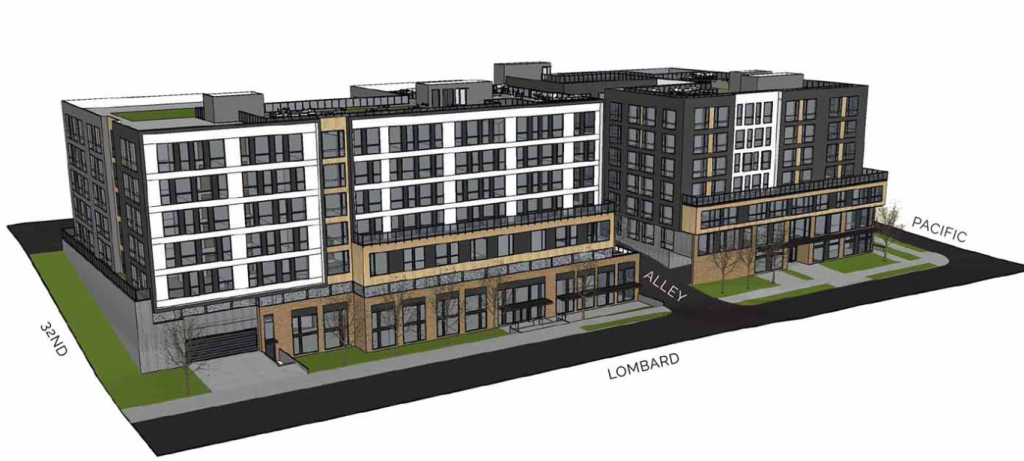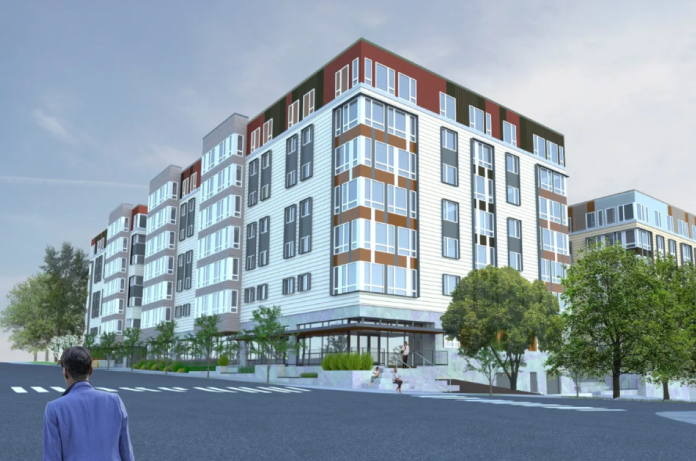
This edition of housing notes will explore some particularly ambitious projects in the works across the Puget Sound region. It’s also worth noting to kick things off that some indicators suggest that the housing market in the Seattle metro area may be creeping toward a more balanced state.
Economists often gauge the health of a housing market by how many months of housing supply are available, which is measured by how fast housing sells. This figure can be determined by dividing the total number of homes for sale in a given area over the number of homes sold in one month, and firms like Redfin track the metric regularly. For example, if there were 30 homes for sale in Tacoma in a month, but only 10 homes sold in that period, that would indicate there are three months of supply left in the Tacoma housing market.
In an average or “healthy” housing market, there are typically four to five months of supply available — anything less than that means that the market is considered to be in a period of scarcity. As you might imagine, in the Seattle metro area housing has been scarce for a long time. However, a July 2022 study released by the Northwest MLS found that housing market in King, Snohomish, Pierce, and Kitsap counties had bumped up to almost 1.9 months of supply, which is the highest it’s been since January 2019.
Now this number is still not great, and importantly, it has not equated to reductions in housing prices, which are still on the rise in all four counties, with Pierce County leading the way with its 12.7% increase from July 2021. However, an estimated 1.9 months of housing supply is a lot better than the figures for July 2021, which were all less than one month.
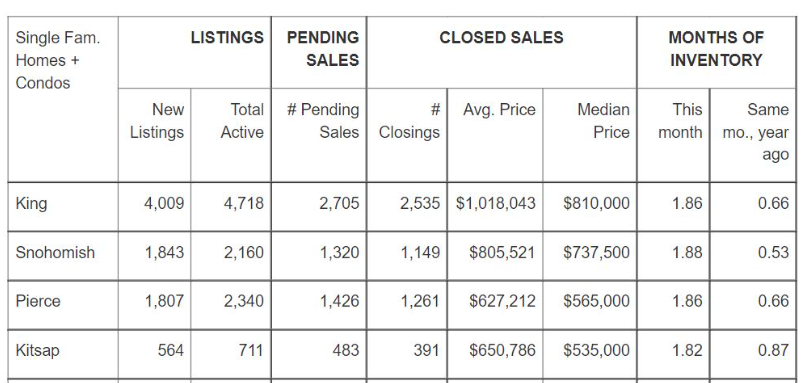
While there is still a lot of progress to be made on this front, ambitious developments like those described below would help to move the region toward a healthier, more affordable housing market.
564 apartment homes near light rail headed to Des Moines/Kent Station
Canadian developer Cedar Coast has filed the paperwork with the City of Kent to bring 564 market apartment homes to a 12-acre parcel of land near the future Des Moines/Kent Link light rail station, anticipated to open as part of the Federal Way Link extension in 2024.
Because part of the land is occupied by a protected wetland, the developer’s planning process began last year and the the SEPA (State Environmental Policy Act) analysis is currently underway. The apartment homes will be spread across three different buildings ranging in height from three to seven stories. A small commercial café and 5,000 square-foot clubhouse are included in the plan, along with two stories of above grade parking — and potentially more surface level parking as well. At this point, the exact parking figure is still being ironed out. The City of Kent is receiving comments on the project, which has been dubbed by the developers as Kent Ridge View, through August 19th.
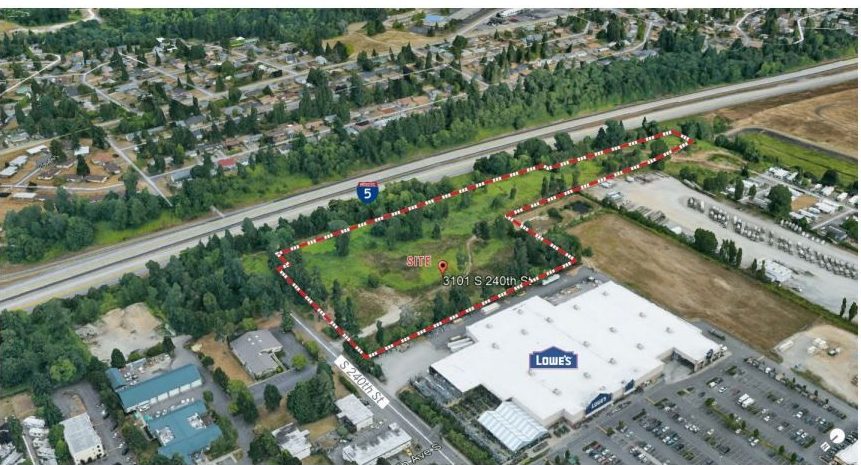
Kent Ridge View is located just south of a four-acre parcel of land owned by Sound Transit that has been designated for housing affordable to a wide range of incomes, commercial space, and community amenities. Sound Transit completed a community visioning project around this parcel in 2020 and 2021 that resulted in a report that was shared with the public during an online open house in May 2022.
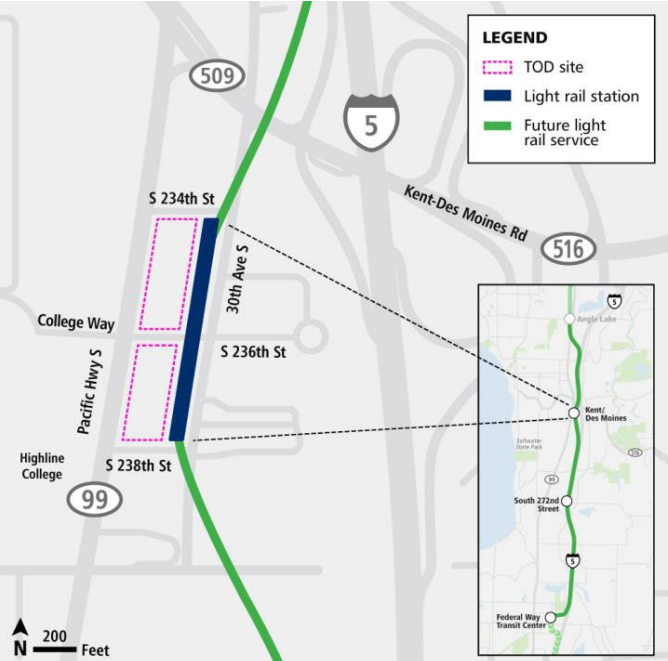
The agency plans to put out a request for proposals to developers in fall of 2022 and hopes to select a proposal to move forward with in early 2023.
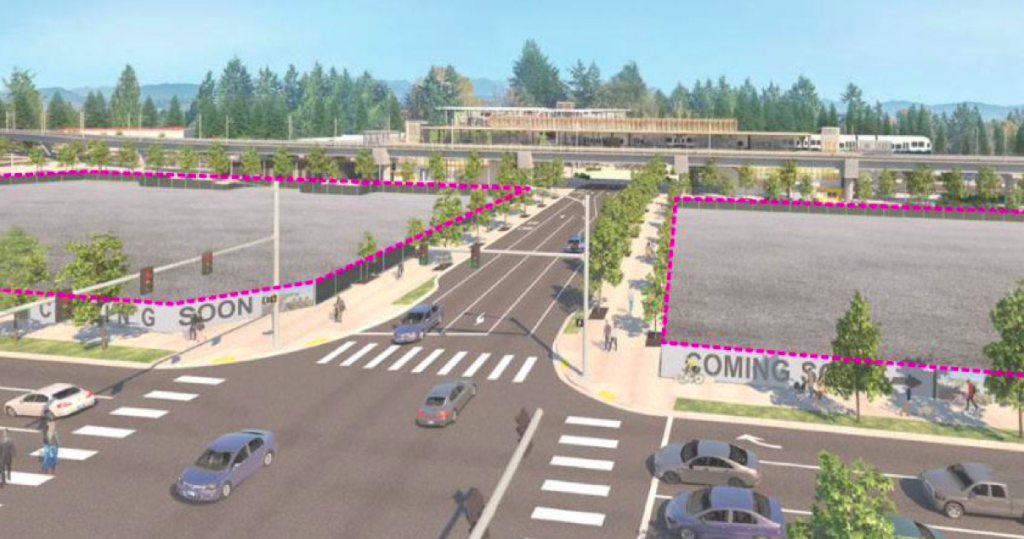
To the east across the freeway interchange, another apartment complex with 285 homes across three four-story buildings on a 6.6 acre site is also in the works, although it was delayed for about six months after Katerra, the original developer, went bankrupt in summer of 2021 and the project was overtaken by Absher Construction. Dubbed Alexan Gateway Apartments, the complex will be near the light rail station as the crow flies, but not as much as the pedestrian navigates a major highway and freeway.
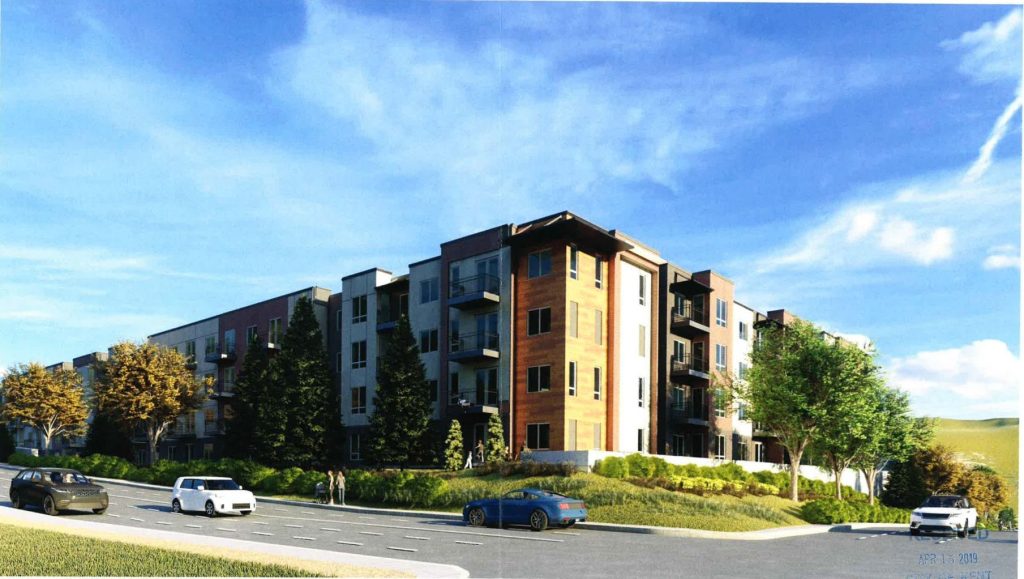
Since community feedback on the Sound Transit project emphasized interest in creating a walkable neighborhood near light rail with a mix of homes, businesses, and amenities like parks in area now most defined by its proximity to busy SR 509, the fact that three major developments are in the works is a hopeful step toward achieving that goal — although how project components, like plans for vehicle parking and safe infrastructure for walking and biking, factor into final designs will significantly impact the success of the future neighborhood. This is definitely a story The Urbanist will be keeping an eye on in the months ahead.
317 apartment homes near transit in Downtown Everett
Two seven-story buildings offering 317 apartment homes have been proposed by developer Bode in Downtown Everett near Everett Station, a major transit hub offering Amtrak, Sounder, Greyhound, and regional bus service. The proposed development, located at the intersection of Pacific Avenue and Lombard Way should bring activity and growth to the quieter southeastern segment of Downtown.
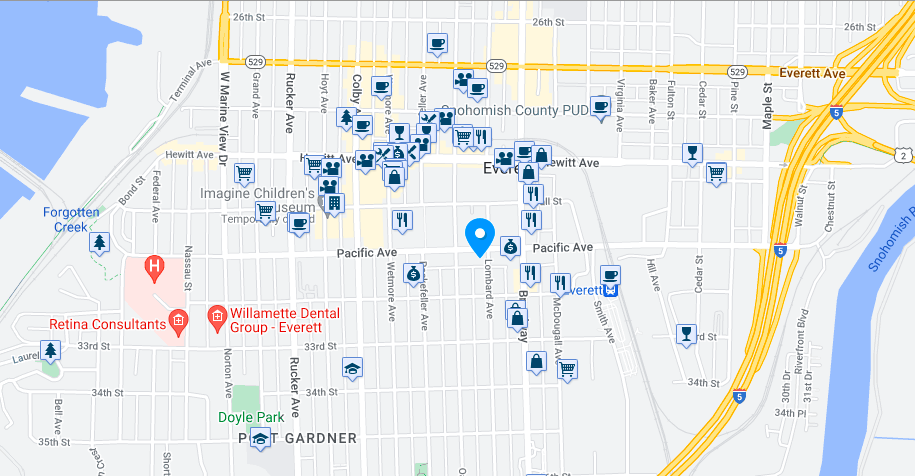
Encouragingly, Bode has proposed fewer parking spots than Everett allows for at the site. To date, 130 vehicle parking spots and 128 bike parking spots have been requested. Apartment homes in the development range from small studios to live/work units and two-bedroom apartments. According to reporting from the Seattle Daily Journal of Commerce, apartment sizes appear to range from 286 to 825 square feet. The project is currently under SEPA review by the City of Everett.
Affordable family size housing headed to Seattle’s Central District
The First AME Housing Association, one of the few Black housing developers in Seattle, has announced its plans to break ground this fall on Phase 1 of its project to replace aging affordable housing at Bryant Manor on Yesler Way adjacent to Pratt Park in Seattle’s Central District. The project is notable for creating two-, three-, and four-bedrooms homes affordable for individuals and families earning 30 to 60% percent of the area median income (AMI), a deeper level of affordability than offered by many affordable housing developments.
When the entire project is completed, the new Bryant Manor will consist of two buildings offering approximately 250 affordable homes. Phase 1 will include the construction of a 7-story building offering 98 homes and the Ashe Prep Early Learning Center, which will be available for using by building residents, as well as for other income eligible Seattle families.
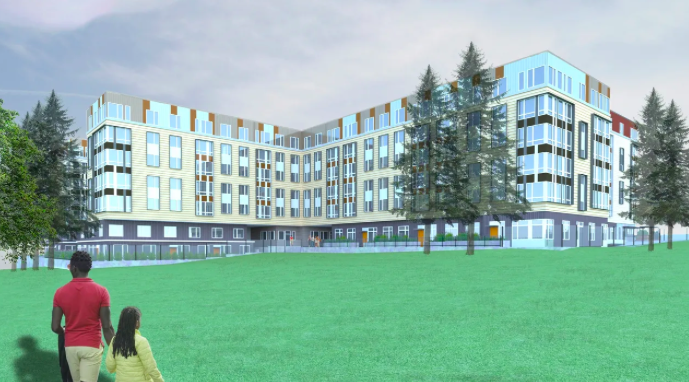
During Phase 1, all existing two-, three-, and four-bedroom units will be replaced in-kind along with an additional 35 one bedroom units. In a July community meeting, First AME Housing Executive Director Shawn Abdul described the addition of the one bedroom units as intended to “increase opportunities for intergenerational living” among families living in Bryant Manor.
Phase 2, slated for a later date, includes plans for 90 two-bedroom and 59 three-bedroom affordable homes. All together, Abdul estimated that the new Bryant Manor could house up to 1,200 residents when both phases of construction are completed.
While praising the project for creating much needed affordable family-sized housing, members of the Central Area Land Use Review committee also expressed concerns both in writing and at community meetings about the fact that no commercial space beyond the early learning center was included in the development, which will occupy a full block of Yesler Way. According to Abdul, requirements attached to project funding made it difficult to include commercial space in the development.
Currently the small business district located near 19th Avenue E. and Yesler Way has a mix of vacant and occupied commercial spaces, presenting the possibility for more growth as future residents move into the area.
Correction: The article was updated at 11am, August 9th, to reflect that Absher Construction took over development of Alexan Gateway Apartments in Kent after Katerra filed for bankruptcy in summer of 2021.
Natalie Bicknell Argerious (she/her) is a reporter and podcast host at The Urbanist. She previously served as managing editor. A passionate urban explorer since childhood, she loves learning how to make cities more inclusive, vibrant, and environmentally resilient. You can often find her wandering around Seattle's Central District and Capitol Hill with her dogs and cat. Email her at natalie [at] theurbanist [dot] org.


